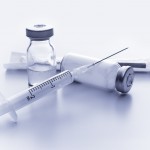
Dental fear and anxiety can still present as barriers to dental treatment, particularly for children. Conscious sedation in many instances is a viable option to general anaesthesia, Nitrous oxide used as a single agent in relative analgesia, is a popular choice for the paediatric patient. Although guidelines published by NICE and SDCEP have suggested the use of midazolam, it can be administered via oral, transmucosal, intranasal, intravenous (IV), intramuscular and rectal routes. The aim of this review was to assess the safety and side effects of IV midazolam for children undergoing dental procedures.
Methods
Searches were conducted in the Medline and Embase databases supplemented by reference searches of included studies. Randomised controlled trials (RCTs) and non-randomised studies involving the use of IV midazolam undertaken in children and adolescents aged 0-16 were considered. Studies using pre-medication and deep sedation techniques were excluded. Two reviewers independently extracted data and assess risk of bias
Results
- 11 studies involving 871 patients were included ( 5 RCTs, 6 non randomised)
- 5 RCTs (169 patients) reported no significant adverse events but 33 (19.5%) minor adverse events. The commonest was paradoxical reaction (n = 11, 6.5%).
- 6 non-randomised studies (702 patents) reported no significant adverse events but 118 (16.8%) minor adverse events. Paradoxical reaction was the most common minor reaction (n = 89, 12.7%)
Conclusions
The authors concluded
Although no significant side effects were recorded, of the minor side effects reported paradoxical reaction was the most common. Due to inconsistency in side effect reporting, the authors suggest the application of a standardised adverse event reporting tool for future studies of sedation in paediatric dentistry.
Commentary
In their discussion the authors note the variation of adverse effect reporting in the included studies, this ranged from zero-80% of patients reporting minor side effects. They also note variation in the descriptions of the side effects that made characterization difficult. Consequently they call for better reporting of adverse events recommending the use of a tool developed by the World SIVA International Sedation Task Force (Mason et al 2012). Encouraging the proper reporting of adverse event events is important for the proper comparison of different techniques and needs to be encouraged not just in this particular area but more widely across dental research. This group has previously reported on the side effects of oral midazolam ( Dental Elf -20th Dec-2012)
Links
Papineni McIntosh A, Ashley PF, Lourenço-Matharu L. Reported side effects of intravenous midazolam sedation when used in paediatric dentistry: a review. Int J Paediatr Dent. 2014 Aug 11. doi: 10.1111/ipd.12127. [Epub ahead of print] PubMed PMID: 25131504.
NICE Clinical Guideline 112.Sedation in children and young people: Sedation for diagnostic and therapeutic procedures in children and young people. 2010
The Scottish Dental Clinical Effectiveness Programme (SDCEP). Conscious Sedation in Dentistry Dental Clinical Guidance, 2nd edn. Dundee: SDCEP, 2012.
Mason KP, Green SM, Piacevoli Q; International Sedation Task Force. Adverse event reporting tool to standardize the reporting and tracking of adverse events during procedural sedation: a consensus document from the World SIVA International Sedation Task Force. Br J Anaesth. 2012 Jan;108(1):13-20. doi: 10.1093/bja/aer407. PubMed PMID: 22157446.

@TheDentalElf interesting and comforting. What’s the evidence for the effects of midazolam in older people used in GA/ITU settings
Don’t miss: Intravenous midazolam sedation for dental treatment: review found no significant side effects http://t.co/JpZx8gFw60